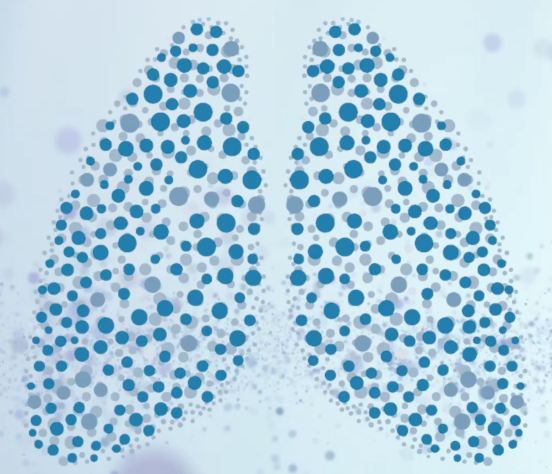A study led by Oxford researchers has found that prior COVID-19 infection is associated with more uneven inflation of the lungs during normal breathing.
There was also an association between hospitalisation with COVID-19 and smaller lung volumes, and admission to the intensive care unit (ICU) was associated with an enlarged respiratory ‘dead space’.

As a respiratory disease, COVID-19 mainly affects the lungs. While most people recover completely, a significant number of individuals experience symptoms that can persist for weeks or months after infection – sometimes referred to as ‘long COVID’.
It remains unclear whether these symptoms are associated with any long-term damage that reduces the function of the lungs and respiratory system.
To investigate this, a study supported by the NIHR Oxford Biomedical Research Centre (BRC) used a novel computational approach to assess how COVID-19 may affect long-term lung function.
The study was based on 178 participants, including patients from Oxford University Hospitals (OUH) NHS Foundation Trust. These were grouped into four categories:
- Control participants, who had not had COVID-19;
- Those who had COVID-19 and were managed in the community;
- Those who were hospitalised with COVID-19 but not admitted to an intensive care unit (ICU);
- Those who were admitted to an ICU with severe COVID-19 and in most cases received invasive mechanical ventilation.
The participants were studied six months and twelve months after COVID-19 infection. The key findings were:
- Prior COVID-19 infection was associated with more uneven inflation of the lungs during normal breathing. This is something that is part of normal aging in the lung. The changes seen after COVID-19 in this study are roughly equivalent to those associated with 15 years of normal aging, but are still much smaller than those seen in established lung disease.
- There was an association between hospitalisation with COVID-19 and smaller lung volumes, but it is not known whether the smaller volumes are caused by COVID-19 infection, or instead represent a predisposing factor for more severe infection.
- Admission to the ICU was associated with an enlarged respiratory dead space (the volume of gas that is breathed into the lungs but does not participate in gas exchange). This may have been caused by COVID-19 infection, but equally may have been caused by the process of mechanical ventilation.
The research team assessed lung function using a novel technique called computed cardiopulmonography, developed with support from the Oxford BRC. In this method, participants breathe through a mouthpiece connected to the measuring device that uses lasers to take highly precise measurements of gas composition. These measurements are then fed into a computational model of the respiratory and cardiovascular systems to estimate values for aspects relating to the individual’s lung function.
For each individual, the model was adjusted to take into account physiological factors that can influence lung function, such as sex, age, height and body mass.

Lead author Professor Peter Robbins (pictured left), from the University of Oxford’s Department of Physiology, Anatomy and Genetics and Co-theme Lead for the Oxford BRC’s Respiratory Theme, said: “Our study illustrates the capability of this new technique to study aspects of lung function not so easily measured through standard clinical tests.
“However, without measurements prior to infection, it is not possible to conclude whether these differences result directly from COVID-19 infection, or whether they are actual risk factors associated with the lungs that predispose towards more serious disease.”
The study was published in the Journal of Applied Physiology. Its authors thanked participants from the two cohorts who took part in the study: one was comprised of members of the armed forces and was supported by the Defence Medical Services Group. The other cohort was recruited from the OUH post-COVID respiratory clinics and supported by an OUH Research Capability Fund and the University of Oxford’s COVID-19 Research Response Fund.
OUH Respiratory Consultant Dr Nayia Petousi, one of the clinical leads for the study, said: We hope that by providing insight into the understanding of post-COVID effects on the lungs, the results can be of help in the clinical management of patients.”